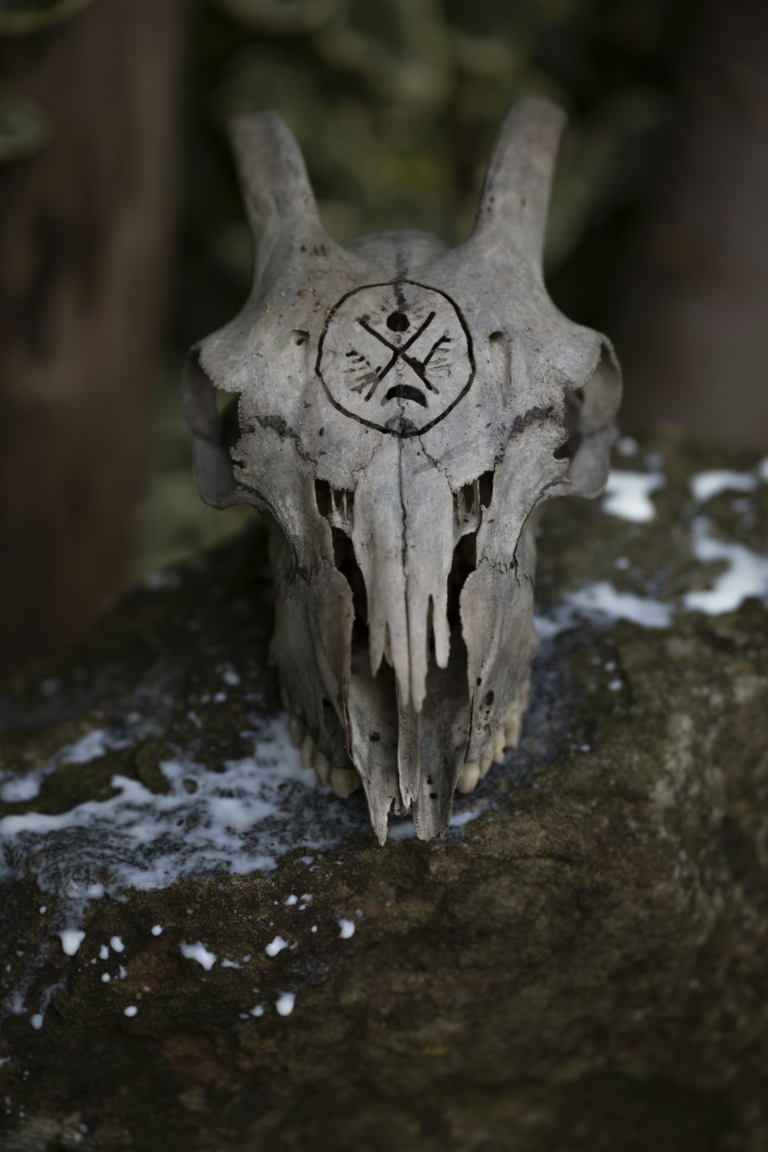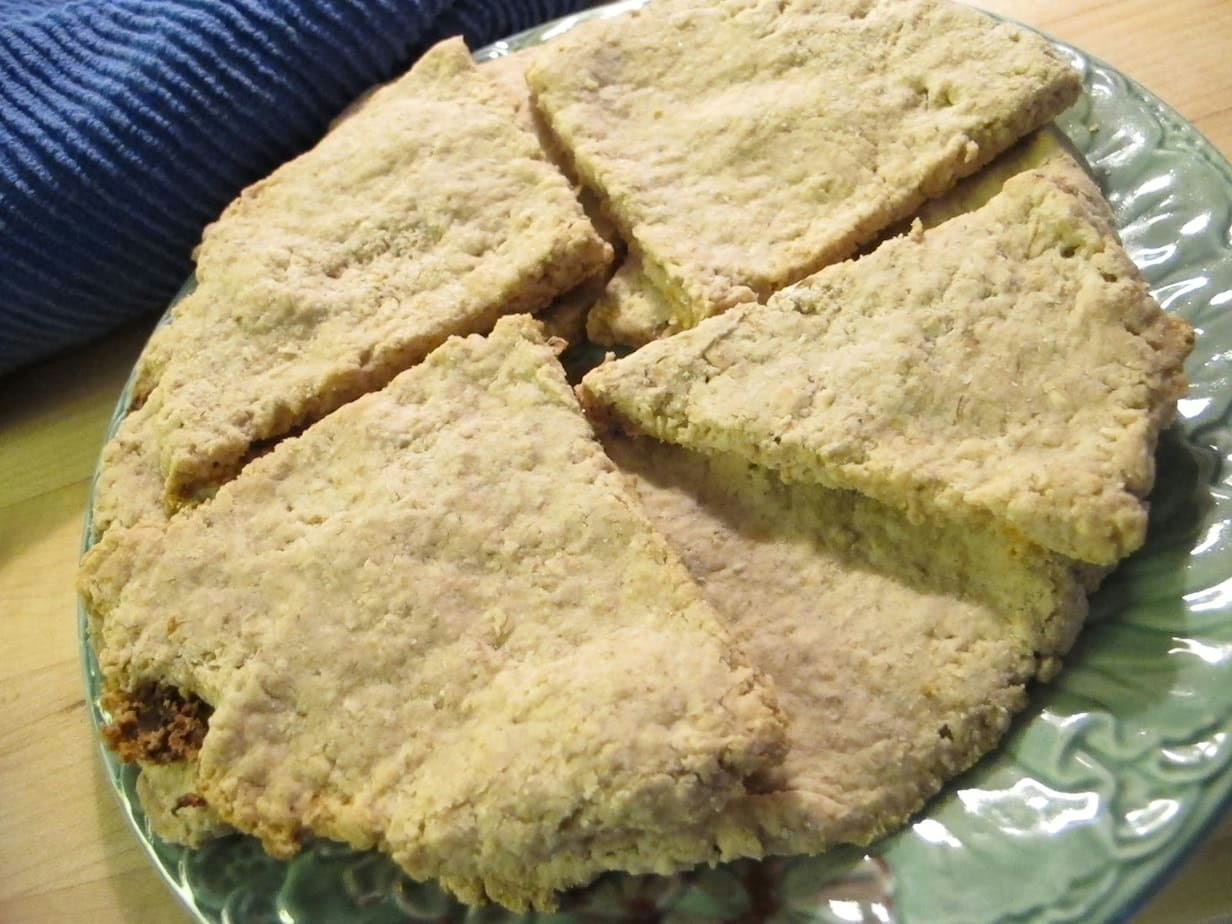
Newsletter Subscribe
Enter your email address below and subscribe to our newsletter

Enter your email address below and subscribe to our newsletter


Exploring Scottish Folk Practices and Traditions

Traditionally a Bealltainn/Beltane/Beltuinn bannock (a ‘bannock’ is a whole oatcake, whilst a ‘farl’ is a quarter) is made and eaten on Beltane morning, to ensure the health of your crops and your herds. This involved a simple ritual of sorts where the bannock is separated into nine ‘knobs’, each one dedicated to something they felt preserved their livestock or perhaps the agent of their destruction (usually a wild animal). Facing a fire...
Traditionally a Beltuinn bannock or beltane bannock (a ‘bannock’ is a whole oatcake, whilst a ‘farl’ is a quarter) is made and eaten on Beltane/beltuinn morning, to ensure the health of your crops and your herds.
This involved a simple folk magic ritual of sorts where the bannock is separated into nine ‘knobs’, each one dedicated to something they felt preserved their livestock or perhaps the agent of their destruction (usually a wild animal). This ritual might be viewed as witchcraft however, its a folk charm. Facing a fire, a person would ask for the safety of their herd or for the wild animal to spare them whilst tossing a piece of the bannock over his shoulder, whilst reciting a rhyme that would go something like this:
“Here to thee, wolf, spare my sheep; there to thee, fox, spare my lambs; here to thee, eagle, spare my goats; there to thee raven, spare my kids; here to thee, martin, spare my fowls, there to thee, harrier, spare my chickens.”[1]
Another tradition was to break the bannock up into small pieces and mark the back of one of the pieces with char from the bealtainn fire. The pieces were then drawn from a bonnet and whomever drew the blackened piece, (known as the Cailleach Beltuinn or the Bealtainn Carline) was considered the sacrifice for the evening. They would be jokingly forced into the fire only to be saved, or made to jump over it three times. They could then be considered to be dead for the night and spoken about as if they had passed on to the otherworld. This may be representation of sacrifices that actually did occur.
Simple enough to make, most older recipes suggest dripping, bacon or goose fat as part of the mix. As much as traditional ways of living have a great deal to teach us, those of us with more modern lives are perhaps not best suited to eating foods full of animal fats as we tend to get more than enough of them already!
Bannock bread is largely composed of oatmeal, which itself has a prominent place in the heart (and belly)

of Scottish tradition as it was easier to grow in Scotland than wheat due to the rather short but wet growing season north of Hadrian’s Wall. Not only that, oatmeal is marvellously healthy being a good source of soluble fibre which helps to lower cholesterol in our bodies (specifically, a fibre known as beta-glucan which is involved in this) and keeps our blood sugar nice and stable for much longer after eating (people in the know call this a good ‘glycaemic profile’). Adding oatmeal to your diet is extremely good for your heart, more so for people who suffer from heart disease, and helps people with diabetes keep their blood sugar balanced. Upping the fibre content of your diet like this has also been linked with a lower risk of certain types of cancer. Oatmeal is also a grain that is well tolerated by people with Coeliac disease as well. It’s an all-round good egg.
Oatmeal is a rich source of B vitamins, excellent for your energy levels (your body needs lots of these vitamins for various energy-production processes in your cells) and is a good source of magnesium, a mineral that has been shown to have an impact on how the body handles stress. Frankly, how could you consider anything else for your breakfast on Beltane morning? Healthy for your herds and for your heart!
For a bannock you will need the following ingredients:
Instructions.
Mix together the oatmeal, salt and baking soda in a bowl. Leave a small depression in the middle of the oatmeal mix, melt the butter and add this to the space you’ve made. Mix all this together and then add in enough of your hot water to make a stiff dough, roll this into a ball.
Scatter some oatmeal on a breadboard or (clean) surface and take your ball of dough, roll it out into a thin pancake (some recipes say about 1/8 inch thickness) that is about 5-7 inches in diameter. If the dough is getting sticky, rub both sides with more dry oatmeal.
Heat up a griddle to on medium heat, take your bannock (you can always cut this into farls, if that’s easier) and cook until golden brown.
And you’re done!
Bannocks are usually eaten warm (just let them cool a bit after cooking) on a bright Beltane morning or eve and served with butter and a special sheep cheese (from the sheep who has just lambed) and a thin custard like drink, known as a Caudle, a bit like egg nog. Or even some Blackberry Whisky if your feeling boozy!
Instructions
mix two large spoonfuls of finely ground oatmeal in water two hours previous to using it; strain it from the grits and boil it. Sweeten and add wine and seasoning to taste. Nutmeg or a little lemon juice answers best for seasoning.
References
[1] F Marian McNeill, (1959), The Silver Bough. Volume 2, , p58-59.
[2] F Marian McNeill. (1929). The Scots ~Kitchen: Its lore and Recipes. Blackie and son ltd. London.
[3] F Marian McNeill. (1929). The Scots ~Kitchen: Its lore and Recipes. Blackie and son ltd. London. (meg dod’s recipe).